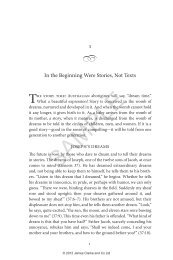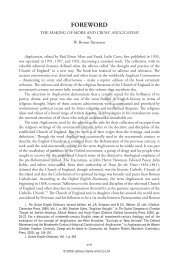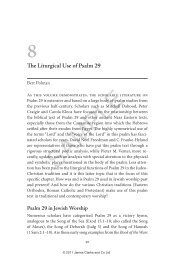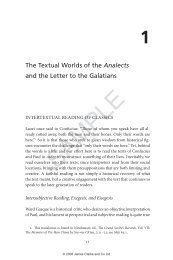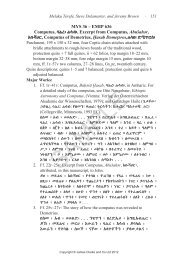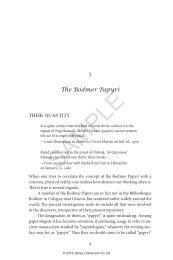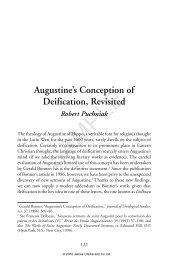Introduction by Kirk R. MacGregor - James Clarke and Co Ltd
Introduction by Kirk R. MacGregor - James Clarke and Co Ltd
Introduction by Kirk R. MacGregor - James Clarke and Co Ltd
Create successful ePaper yourself
Turn your PDF publications into a flip-book with our unique Google optimized e-Paper software.
<strong>Introduction</strong><br />
Theological Seminary professors Archibald Alex<strong>and</strong>er (1772–1851),<br />
Charles Hodge (1797–1878), A. A. Hodge (1823–1886), <strong>and</strong> Benjamin B.<br />
Warfield (1851–1921).<br />
In the twentieth century, a third view of eternal security began to take<br />
shape which depended entirely on justification rather than on sanctification,<br />
often referred to <strong>by</strong> its proponents <strong>and</strong> detractors under the moniker<br />
of “once saved, always saved.” Exp<strong>and</strong>ing upon the forensic justification<br />
introduced <strong>by</strong> Luther <strong>and</strong> codified <strong>by</strong> his successor Philip Melanchthon<br />
(1497–1560), this model avers that eternal security constitutes, within the<br />
internal logic of the Trinity, part of God the Father’s decision to declare<br />
the believing sinner at the moment of personal faith “not guilty” on the<br />
basis of the infinite penalty that God the Son has paid on the sinner’s behalf.<br />
Not only is this verdict irreversible, but, owing to the majesty of God’s<br />
grace, it persists for all eternity regardless of how the individual proceeds<br />
to behave or even whether the individual renounces faith in Christ. Unlike<br />
the Reformed <strong>and</strong> the Second Great Awakening insistence that assurance<br />
of salvation <strong>and</strong> personal holiness of life amount to two sides of the same<br />
coin, proponents of this third view radicalize the Reformation maxims of<br />
sola gratia <strong>and</strong> sola fide <strong>by</strong> distinguishing between repentance <strong>and</strong> faith<br />
(through which grace comes), denying the necessity of the former at any<br />
point in life but affirming the necessity of the latter at some point in life<br />
for eternal salvation. Earl D. Radmacher expounds this perspective with<br />
all-desirable clarity:<br />
Don’t confuse justification <strong>and</strong> sanctification. Tell unbelievers that<br />
if they simply believe in Christ they will at that moment have eternal<br />
life. That is justification <strong>by</strong> faith alone. . . . If an unbeliever asks<br />
if he must give up his sinful ways to have eternal salvation, tell him<br />
no. The only condition is faith in Christ. Tell him, however, that sin<br />
never pays, for the believer or the unbeliever, <strong>and</strong> that he should<br />
turn from his sinful ways whether or not he is convinced that Jesus<br />
gives eternal life to all who merely believe in Him for it. . . . Believe.<br />
Not repent. Not believe plus repent. Just believe. It’s that simple. 2<br />
SAMPLE<br />
Accordingly, this model assigns to repentance a primarily ethical function,<br />
where repentance focuses more on the horizontal dimension of social<br />
influence than the vertical dimension of union with God.<br />
2. Earl D. Radmacher, “Salvation: A Necessary Work of God,” in Underst<strong>and</strong>ing<br />
Christian Theology, gen. eds. Charles R. Swindoll <strong>and</strong> Roy B. Zuck (Nashville: Nelson,<br />
2003), 944.<br />
xix<br />
© 2011 <strong>James</strong> <strong>Clarke</strong> <strong>and</strong> <strong>Co</strong> <strong>Ltd</strong>





